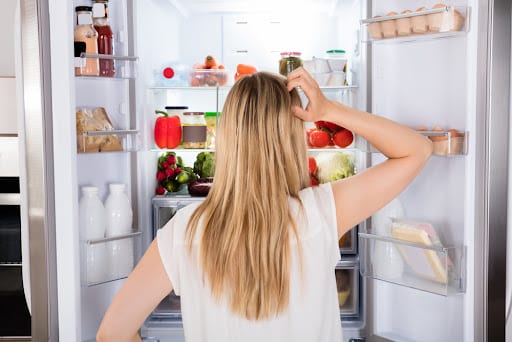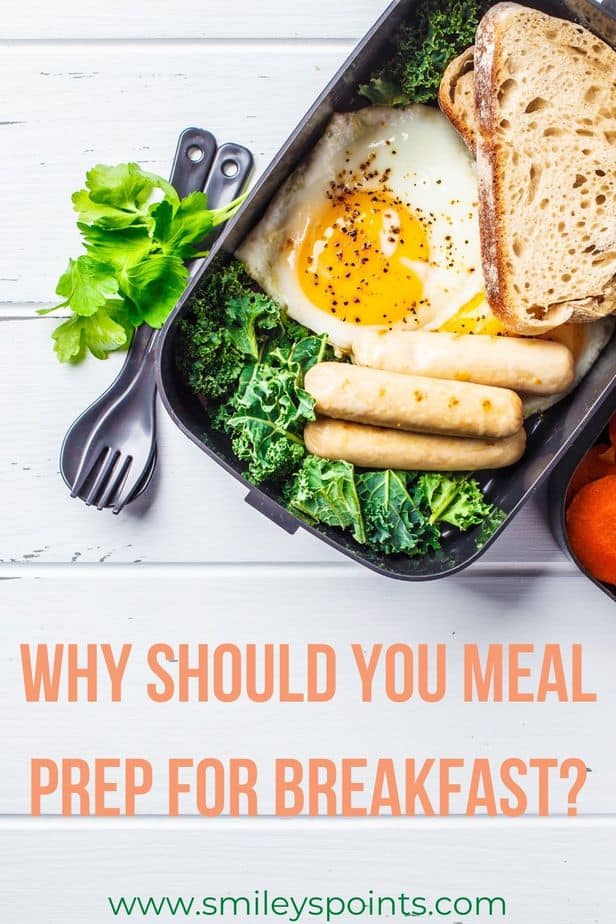How to Find Something Good to Eat While You Travel & Stick to Your Diet

Traveling while on a diet can be a frustrating experience. Not only are you likely to be frustrated trying to find places to eat, but you may not be able to prepare your meals like when you were at home. Plus, the peer pressure to indulge on vacation can be overwhelming. Temptation is everywhere when all you want to do is find something good to eat.
Depending on the type of travel you’re doing, peer pressure can be an incredible force that may test your resolve. If you are traveling on business, well-meaning colleagues may try to coax you into relaxing, justifying unhealthy foods by telling you that you’ve earned it. Relatives can do the same thing. Plus, the temptation to grab a quick bite is everywhere. So, how can you find good, healthy food?
Finding Something Good to Eat
If you find traveling causes you to deviate from regular healthy eating, establishing a food itinerary may help. With a simple strategy and proper planning, you can feel confident in your daily choices.
Traveling by Plane

If you are in a time crunch and can’t resist an airport restaurant, it is best to incorporate a tactic that allows you to stay hydrated. Despite water being more expensive, it can be found anywhere and will satisfy hunger cravings. Water fountains are another option if you are short on cash or don’t want to spend the extra money.
Drinking water will help fight obstacles that may occur during travel. It enhances mood (which is great for staying calm during delays), aids digestion, prevents headaches, and suppresses appetite. Experts advise drinking one cup of water per one hour of travel time. You should also increase water intake both pre- and post-flight.
Take some ginger or chamomile tea if you are susceptible to indigestion or stomach upset while flying.
Avoid the temptation to consume alcohol on a flight. While most people claim it relaxes them, it dehydrates the body, messes with blood sugar levels and mood, and can disrupt your sleep cycle. It will make most people haggard and irritable with dried-out skin and red eyes.
It is also best to remember that commercial airplanes contain low humidity, which can cause dehydration. A comfortable humidity for most people is at 50%. However, the air in an airplane cabin can go as low as 3% if you are on a long flight.
Good: Find Low-Calorie Snacks
Don’t be tempted to go off the diet before taking off, either. Avoid fries, nuts, and candy bars. The following suggestions contain only 150 calories and are readily available.
- Single Serving of a Sabra Hummus Pack – This sharable, filling, high protein treat is only 150 calories.
- Fresh Fruit – A small apple is only 80 calories, and a small banana containing potassium is only 75 calories and reduces hunger.
- Mini Clif Bars – These bars contain 100 calories and have protein. They come in four flavors, and the compact size makes them great for traveling.
Better: Bring Food from Home
With some airlines removing in-flight meals, bringing your own food has become essential. These are some travel-friendly and healthy food options to try on your journey:
- E-Boost Supplements – You can mix this all-natural energy drink with water to provide a vitamin-rich formula. It increases your energy levels and supports the body’s natural immune system.
- Instant Oatmeal – Mix individual packets with hot water at the airport or during your flight. When implementing this, avoid brands using high amounts of sugar. Starbucks has some great low-calorie options.
- Dried Fruit and Walnuts – Rich in omega-3 fatty acids, walnuts keep adrenaline and stress hormones balanced if you face high blood pressure or any stressful or turbulent traveling moments. Dried fruit will supply you with antioxidants necessary to protect you from the stressful effects of delays and is a good source of fiber to aid digestion.
- Protein Powder – You can mix protein powder with cold water or juice. Studies indicate that liquid proteins are more effective than fats or carbs when suppressing motion sickness and nausea.
- Sunflower Seeds and Raw Almonds – These items are high in melatonin. This hormone induces sleep and helps the body regulate its internal clock when traveling to an unfamiliar time zone. Sliced apples with almond butter, brown rice cakes, or celery stalks can be easily packed and are very filling.
The idea is to pack portable items and find high water content food. Water has the benefits of flushing toxins from the body, hydrating you, and making you feel fuller for longer. For this reason, foods with high water content are more satisfying for longer. An additional benefit is that they are low in calories as well.
When flying, you can also bring an insulated lunch box to pack small containers of salad dressing, salads with protein, boiled eggs, hummus, carrot sticks, etc. In your carry-on, you can bring beef jerky, nuts, apples, packets of nut butter, tuna salad, strips of grilled chicken, blender bottles, and protein shakes.
For some international destinations, contact your airline before planning your meal. There may be restrictions on fresh produce that you are unaware of. They will be able to confirm which items you can bring, saving you the hassle, confusion, and embarrassment when you are boarding.
Traveling by Car

When traveling by car to your destination, bring a car cooler that plugs into your car’s power source. Before leaving, you can prepare your meals, snacks, and drinks for each day of your trip. Then, all you need to do is open your cooler and take out your food. This tip will save you both time and money.
While At Your Destination

Travel can often lead to increases in dining out experiences. The best way to find something good to eat is by being proactive in your approach and planning in advance. You can schedule when you eat, which determines your location and what your available foods will be.
This way, you won’t make impulsive food decisions that may lead to poor eating choices. Having a plan ensures you don’t wait for extended times between meals, leading to cravings and excess hunger.
Plan Where You Will Eat
If you don’t know where to eat, or perhaps your researched location is no longer available, use an app like HappyCow or Yelp to find local places to eat. Furthermore, when looking for restaurants, keep the following in mind:
- Begin with broth-based soups, veggie dishes, and side salads. They are low-calorie and will fill you up, keeping you from overeating high-calorie foods later in your meal.
- Look for vegetable and protein options.
- Request dressings on the side.
- Choose grilled instead of fried.
- Ask how your food is being prepared.
- Request substitutions like a salad instead of fries.
- Swap cheese for added vegetables like lettuce, tomatoes, and onions.
- Avoid buffets and fast food if possible.
- Box part of the meal to prevent consuming too many calories.
- Consume water with lemon or plain iced tea as opposed to pop.
Book a Room with a Kitchenette
A room with a kitchenette will allow you to prepare your own meals and snacks without worrying about relying on nearby restaurants. It can be extremely helpful in avoiding temptations and give you more control in preparing your meals.
Make Purchases at Local Grocery Stores
Try to find a grocery store or market with fresh produce instead of searching out familiar chain restaurants. Look for a supermarket located close to where you are staying, or if there isn’t something nearby, search for another place.
Buy enough food to prepare healthy meals daily. Cook up some bell pepper and onions in olive oil, toast some whole grain bread, add some scrambled eggs for a filling breakfast and then eat out for the remainder of the day. You can also pack snacks or meals while on the go. Fresh fruit and vegetables are great, filling snacks, and you can also make a homemade smoothie if you need something on-the-go.
Stay Hydrated
A healthy diet always involves remaining hydrated. Remember to drink lots of water – especially when the weather is hot. Be mindful that coffee, alcohol, and soda are not replacements for water.
Even if you are only mildly dehydrated, the brain can mistake your thirst for hunger, increasing your cravings and appetite. Dehydration drains energy, making you less physically active. When on the go, focus on bringing your water along and consuming 16 ounces per meal. Additionally, drinking water before meals aids in portion control.
Avoid Indulging at Every Meal
Indulging is fine if you eat a meal at a location known for a particular dish. However, make sure your meals overall are balanced. Include foods rich in vegetables, healthy fat, protein, and carbs for the remainder of your trip. This will keep you feeling energized.
A trick to holding yourself accountable is using a salad-sized plate instead of a dinner plate. This works twofold:
- Serving sizes have become more generous over the years, as have plate sizes. If you downsize your plate, it will trick your body into thinking it is consuming more food than it is, and you will feel fuller.
- Prioritize anything green by filling half the plate with leafy greens, veggies, or roasted vegetables. Place a palm-sized amount of protein on the plate next, and then a thumb-sized amount of healthy fat (nuts, seeds, avocado slices, or olive oil).
Other ways to encourage yourself to eat healthily and find recipe alternatives are apps like Noom and Healthi. They allow you not only to track calories, but they have most restaurants listed in it as well. With the restaurant listings, there are menu listings with caloric intakes. This takes the guesswork out of counting calories.
Treats Should be Intentional
When traveling, you should mindfully savor every delicious meal. For better long-term results, you should not use food to fill time or as a reward.
Treat yourself when it is sensible. Allow for a certain number of treats in specified portion sizes. You can plan for this or use it spontaneously if it is something you feel you really must try. This way, your treat becomes a trip highlight instead of a guilty moment. It allows you to return feeling great along with the memory of that one special treat.
Don’t Stress if You Overeat
There is a time and place for healthy eating. Don’t be afraid to cut yourself some slack while you’re away, but know when to be more disciplined. You need to have a healthy relationship with food, which doesn’t mean being obsessive by taking a food scale or not enjoying yourself.
Most weight gain in a week of vacation tends to be constipation and water weight. When you arrive home, you can be more disciplined about healthier eating. If you eat more vegetables plus healthy carbs and proteins in the appropriate portion size, your body will quickly return to the way it was.
Plan for Physical Activity
No matter where you go, you can always do something to stay active. You don’t have to hike up the largest mountain, but you can go along a hiking or walking path and soak in nature. Doing so allows you to burn more calories and affords you the luxury of eating more at your next meal.
While traveling, it is not difficult to find something good to eat. All you need to do is be purposeful, strategic, and plan your meals and dining out to enable you to feel more in control and confident throughout your trip.



